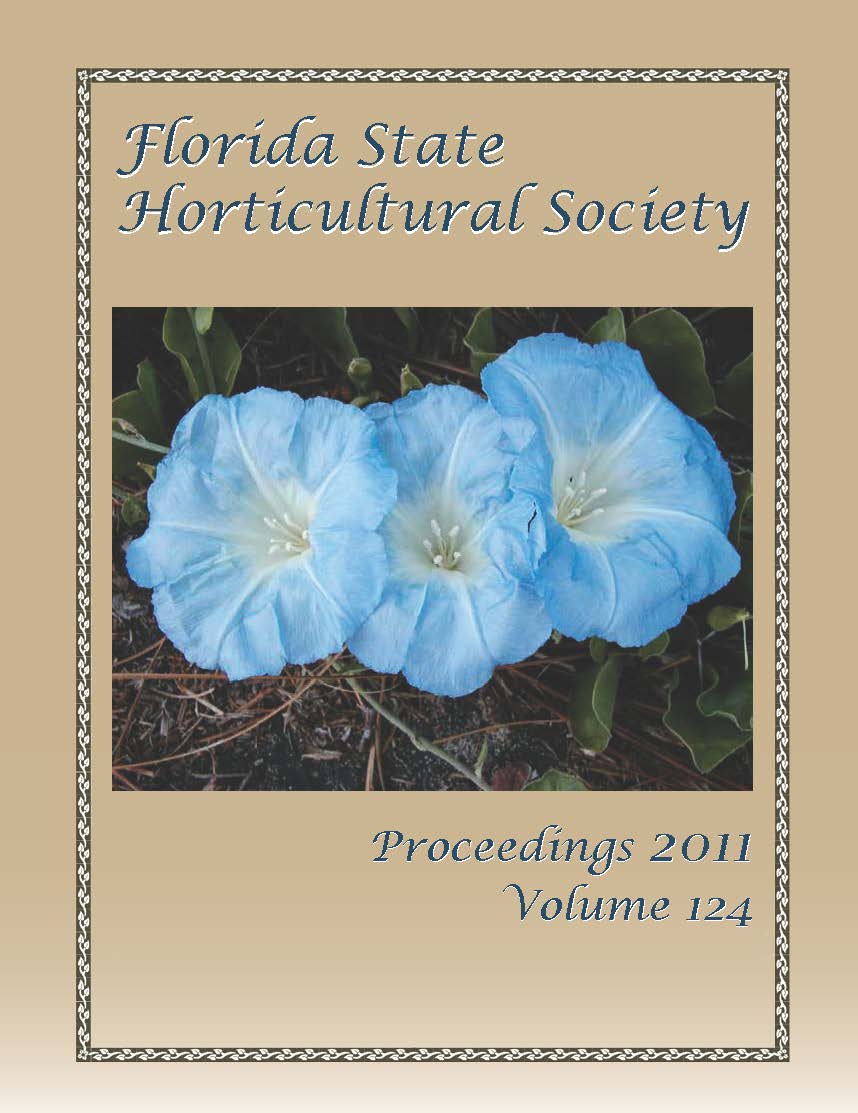Salinity Tolerance of Cleopatra Mandarin Seedlings and Two of Its Trifoliata Hybrids, US-897 and x639
Abstract
In a greenhouse study, we evaluated growth, leaf Cland Na concentrations along with physiological responses of seedlings of the relatively salt tolerant citrus rootstock Cleopatra mandarin (Cleo) and two of its commercial hybrids, Cleo ×Flying Dragon trifoliata (US-897) and Cleo ×Rubidoux TF (x639). These hybrids have some horticultural advantages over Cleo but their relative tolerance to salinity is not known. Well-fertilized and well-watered 4-month-old seedlings were grown in a high peat soilless potting mix and salinized with 0, 30, or 60 mM NaCl (maximum EC= 7.36 dS·m–1 or TDS = 5,152 ppm) for 9 weeks. Both hybrids grew more than Cleo regardless of salinity level. At the end of the experiment, total plant dry weight (TPDW) of Cleo and US-897 was reduced by salinity but growth of x639 was unaffected. Final total leaf area of x639 was greatest followed by Cleo and US-897. Seedlings of x639 also had the highest root to shoot dry weight ratio as x639 allocated relatively more growth to roots than to shoots. Seedlings x639 accumulated higher concentrations of Cl in roots while Cleo accumulated the highest Na in roots. Both hybrids accumulated more Cl in leaves than Cleo and leaf Na concentrations were highest in x639. High salinity reduced leaf photosynthesis and water use efficiency most in US-897. The greater growth and higher leaf Cl levels support the idea that both hybrids were more salt tolerant than Cleo at least at moderate salinity. At high salinity, seedlings of x639 grew more and had higher leaf water use efficiency than US-897.

